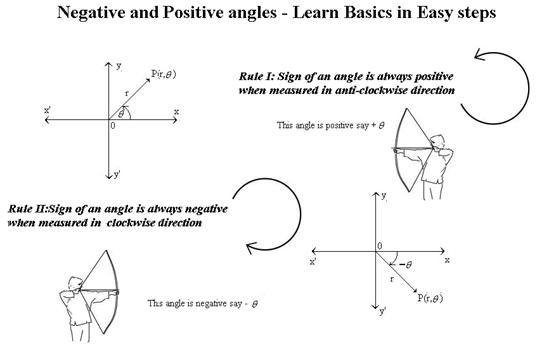Angle Meaning
The number of rotation concerning the intersection point of the two planes or the two lines which are needed to lead the one in accordance with the alternative one is known as the Angle.
The angle can be denoted by 3 letters of the shape which defines the angle, with a middle letter, where actually, the angle is its vertex.

Eg. ∠ABC, where point B is the angle given
Terms of Angle measurement are –
- degrees °
- Radians
- Gradians
Angle Parts:

- Vertex – Angle’s corner points are called the Vertex. It’s that point where the 2 rays gather or meet.
- Terminal Side – It is that ray or side which extends up to which the measurement of an angle is done.
- Initial Side – Initial side is even called the reference line. All measurements are completed by proceeding with this line as reference.
Angle Types:
- Acute Angle ranges from 0° to 90°, and both are exclusive.
- Straight Angle – Exactly 180°.
- Obtuse Angle ranges from 90° to 180°, and both are exclusive.
- Full Rotation – Exactly 360°
- Right Angle – Exactly 90°.
- Reflex Angle – 180° to 360°, & both are exclusive.

Angles are of different types which are mainly:
- Positive Angle
- Negative Angle
The generation of the angle when done in the anti-clockwise rotation, it is regarded as the Positive Angle. And when the generation of angle is done in a clockwise direction, it is known as a Negative Angle.
Positive Angle
An angle generated by anti-clockwise rotation is a positive angle. In figure let the initial side is OX. When this side is rotated by an angle θ in counter-clockwise direction, then the angle is generated is called a “positive angle”.
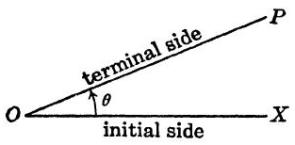
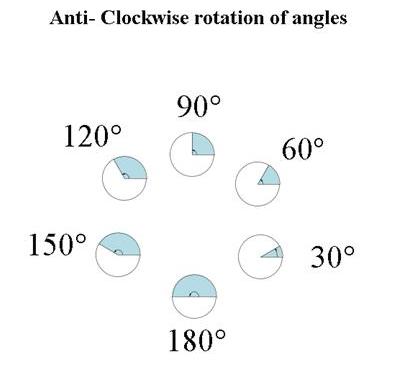
Negative Angle
The generation of an angle by a clockwise rotation is known to be a positive angle. In the figure below, the initial side is given by OX. When this OX side is made to rotation by θ angle in a clockwise direction, accordingly the angle is termed as Negative Angle.
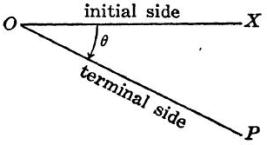
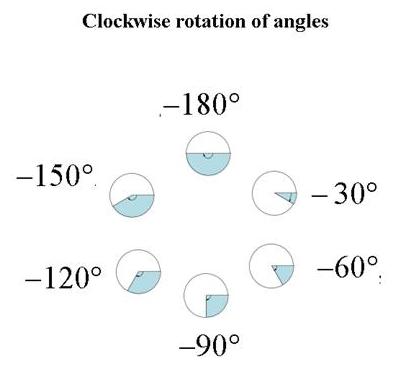
Is 30-degree angle is not the same as -30-degree?
Simply, the answer is NO. But Why?
The angle consist of 2 attributes which are attached to it:
- Direction of rotation in the clockwise or anticlockwise direction.
- Degree of Rotation or rotation magnitude.
While the above two angles consist of the same rotation degree, same rotation’s direction which is opposite as being indicated by opposite signs of theirs. Thus, these are 2 different angles.

Conclusion
If an angle is generated by a counter-clockwise rotation, we call angle a positive angle.
On the flip side, if the generation of angle is by clockwise rotation, then it’s regarded as a negative angle.
